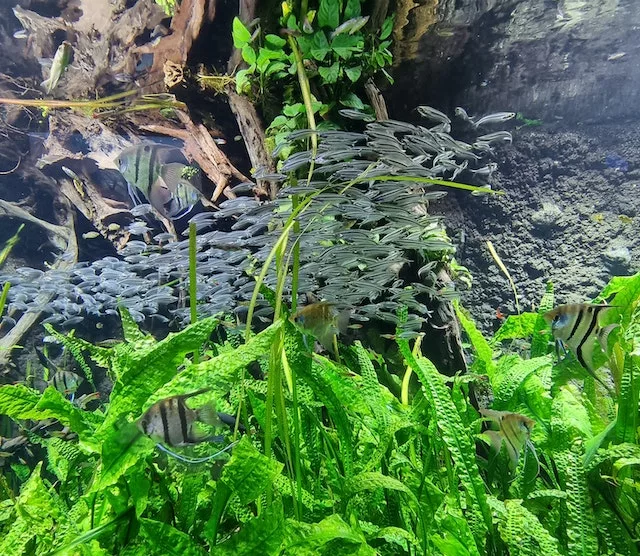
Photo by Ivan Dražić:
Introduction
Aquascaping, the art of creating stunning underwater landscapes in aquariums, has gained immense popularity among hobbyists and enthusiasts. However, the beauty of an aquascape can only be preserved through diligent maintenance. In this comprehensive guide, we will explore the steps and tips on how to maintain an aquascape effectively, ensuring that your aquatic masterpiece thrives for years to come.
Understanding the Basics
1. Selecting the Right Plants and Fish
Choosing the appropriate aquatic plants and fish species is crucial. Ensure they are compatible and suited to the size of your aquarium. Research their specific care requirements.
2. Proper Water Parameters
Maintaining optimal water parameters is essential. Monitor and regulate factors like temperature, pH, ammonia, nitrite, and nitrate levels regularly.
3. Lighting Matters
Aquascapes often rely on artificial lighting. Invest in high-quality LED lights to mimic natural conditions and promote plant growth.
4. Substrate and Hardscape
Create a balanced substrate and hardscape layout. Make sure it complements the chosen plants and enhances the overall aesthetics.
Routine Maintenance
5. Regular Water Changes
Frequent water changes are vital to remove excess nutrients and maintain water quality. Aim for at least 20% every week.
6. Pruning and Trimming
Aquatic plants can grow rapidly. Trim and prune them as needed to prevent overgrowth and maintain the desired shape.
7. Algae Control
Algae can be a common issue. Use algae-eating fish and maintain consistent lighting to prevent algae outbreaks.
8. Cleaning the Aquarium
Regularly clean the glass, substrate, and decorations. Remove debris and waste to keep the environment pristine.
Advanced Maintenance
9. CO2 Injection
Consider CO2 injection to enhance plant growth. This should be done cautiously, monitoring CO2 levels to avoid over-dosing.
10. Fertilization
Provide essential nutrients to your aquatic plants through liquid or substrate fertilizers, following recommended dosages.
11. Monitoring Equipment
Invest in quality monitoring equipment like pH meters and thermometers to ensure stable conditions.
12. Quarantine New Additions
Before introducing new fish or plants, quarantine them to prevent the spread of diseases and pests.
Troubleshooting Common Issues
13. Dealing with Plant Deficiencies
Learn to identify and rectify nutrient deficiencies in plants to maintain their health and vibrancy.
14. Addressing Fish Health
If your fish show signs of illness, quarantine them promptly and seek advice from a qualified aquarist or veterinarian.
15. Balancing the Ecosystem
Maintain a balanced ecosystem by ensuring that the fish-to-plant ratio is appropriate for your aquarium size.
Conclusion
In conclusion, maintaining an aquascape is a rewarding endeavor that requires dedication and knowledge. By following the guidelines outlined in this comprehensive guide, you can ensure the longevity and splendor of your underwater masterpiece.
FAQs (Frequently Asked Questions)
- How often should I clean my aquarium? Regular cleaning is crucial. Aim for weekly water changes and as-needed cleaning of the glass, substrate, and decorations.
- Do I need to use CO2 injection in my aquascape? CO2 injection can benefit plant growth, but it’s not mandatory. Consider it if you aim for lush plant growth.
- What do I do if my fish show signs of illness? Quarantine the affected fish and seek guidance from an experienced aquarist or veterinarian.
- Can I use tap water for my aquarium? Tap water can be used but must be treated with a water conditioner to remove chlorine and chloramines.
- How can I prevent algae growth in my aquascape? Proper lighting, regular maintenance, and the use of algae-eating fish can help control algae growth.